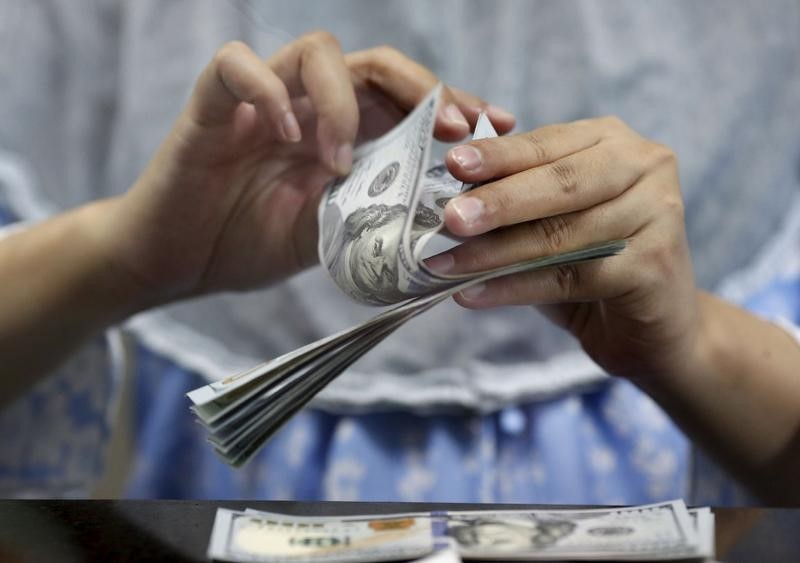By Peter Nurse
Investing.com - The U.S. dollar edged lower Tuesday, but losses are minor with the Russia/Ukraine conflict generating safe haven flows and traders still mulling the potential for aggressive Federal Reserve interest rate hikes.
At 2:55 AM ET (0755 GMT), the Dollar Index, which tracks the greenback against a basket of six other currencies, traded 0.1% lower at 96.220, having reached a two-week high on Monday.
Although the dollar has weakened slightly, this follows sharp gains over the last few sessions as tensions on the Ukraine border grew. The United States warned on Monday that Russia could soon invade, while Secretary of State Antony Blinken announced that the U.S. embassy would be relocated from Kyiv to Lviv, citing the "dramatic acceleration in the buildup of Russian forces".
“For now, it looks like markets are holding on to a mostly sanguine stance, even though Friday’s price action showed a shift to defensive trades,” said analysts at ING, in a note,
EUR/USD rose 0.2% to 1.1324, having touched 1.1278 the day before, its lowest in over a week, risk-sensitive AUD/USD fell 0.1% to 0.7118, while USD/JPY fell 0.2% to 115.30, after briefly hitting 114.99 on Monday, also a one-week low.
Earlier Tuesday, data showed that Japan’s economy expanded an annualised 5.4% in October-December, below expectations for a 5.8% gain, after contracting a revised 2.7% in the previous quarter.
Aside from the Ukraine conflict, traders are trying to gauge the Fed’s intentions when it next meets in March in terms of interest rate hikes.
St. Louis Federal Reserve President James Bullard reiterated on Monday his call for the U.S. central bank to take decisive action, citing four strong inflation reports in a row.
Last week's stronger-than-expected U.S. consumer price index report, in particular, has raised expectations that the Fed might raise rates by a full 50 basis points in March.
“While we doubt the Fed will deliver half-point increases, ongoing market speculation in that direction can offer some support to the dollar, and 96.00 could represent a floor for DXY this week,” added ING.
Additionally, GBP/USD rose 0.1% to 1.3534, after the release of the latest U.K. employment data. Britain's unemployment rate for the three months to the end of December held at 4.1%, but the January claimant count fell almost 32,000, suggesting the labor market could be recovering from the Omicron hit.
